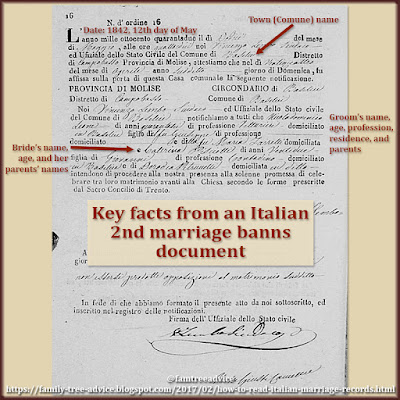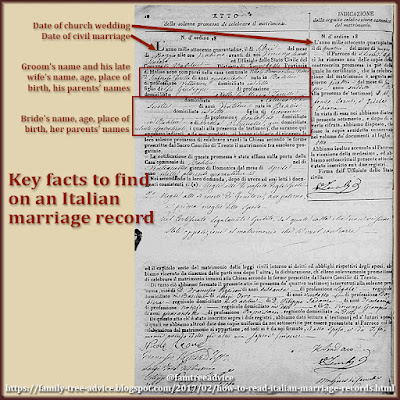Biology. Anthropology. Archaeology. They're all sciences, and lots of sciences end in -ology: "the study of". Genealogy is the study of lines of decent or development. Another science.
So it makes sense to use the well known Scientific Method in genealogy.
But how would that work? Well, the Scientific Method—principles and procedures for the systematic pursuit of knowledge—includes these steps:
1. Ask a Question. When were my great great grandparents married?
2. Construct a Hypothesis. Get very specific by looking at the genealogy facts you have. Do you know what year your great grandmother was born? Do you know when her parents were born? Were they old enough to have an earlier baby?
3. Test Your Hypothesis. When it comes to family trees, your research is your experiment. You can search available records for the answer to your question. I know my great grandmother was born in 1856. I know her parents' names and ages. My test is to search for other babies in 1855, 1854, 1853, etc., until the couple was too young to have children.
4. Analyze Your Data and Draw a Conclusion. Let's say you found more babies and then they stopped. You may conclude that your great great grandparents married at least nine months before the birth of their first child.
Let's see the Scientific Method in action on my family tree.
 |
| My first clues led to my question and hypothesis. |
Ten years ago a friend in Italy went to the town hall in my ancestral hometown on my behalf. He requested a few birth, marriage and death records for me.
The town hall typed some of the important facts onto new forms. My friend sent copies of these forms to me.
I learned that my great grandmother, Marianna Iammucci, was born on January 1, 1856. Her parents names were not included.
A few years later I spent an extraordinary amount of time in a Family History Center poring over microfilmed vital records from this town. I went to the 1856 birth records and found Marianna Iammucci. I learned her parents were Antonio Iammucci born in 1814 and Annamaria Bozza born in 1815.
My question was, "How many brothers and sisters might she have had, and when was the first one born?"
Her parents were ages 41 and 40 in 1856. I hypothesized that there could be several more children born before my great grandmother. Since women in Italy at that time went well into their 40s bearing children, there might be some brothers or sisters after her, too.
Time to test my hypothesis. I checked the indexes of each year before 1856. While looking for babies born to Antonio Iammucci and Annamaria Bozza, I found:
- Luigi Maria born in November 1852
- Giovannangelo born in July 1849
- Leonardo Antonio born in December 1846
- Leonardo Antonio born in August 1845 (who died in February 1846)
- Mariangela born in March 1843
The babies seemed to stop there.
Analyzing these births, I concluded that Leonardo and Annamaria could have gotten married as late as June 1842.
Now we've come full circle! My conclusion about their June 1842 marriage became my next hypothesis. I went straight to the 1842 marriage index.
I found them. They were married on June 12, 1842. Success!
I've spent many a weekend jumping from person to person in my tree. It's unstructured fun. But it's the Scientific Method that gets me focused and produces excellent results.
Start thinking of your genealogy research as the science that it is. My hypothesis is you'll be very pleased you did. (And my conclusion is that sentence was horribly corny.)
















